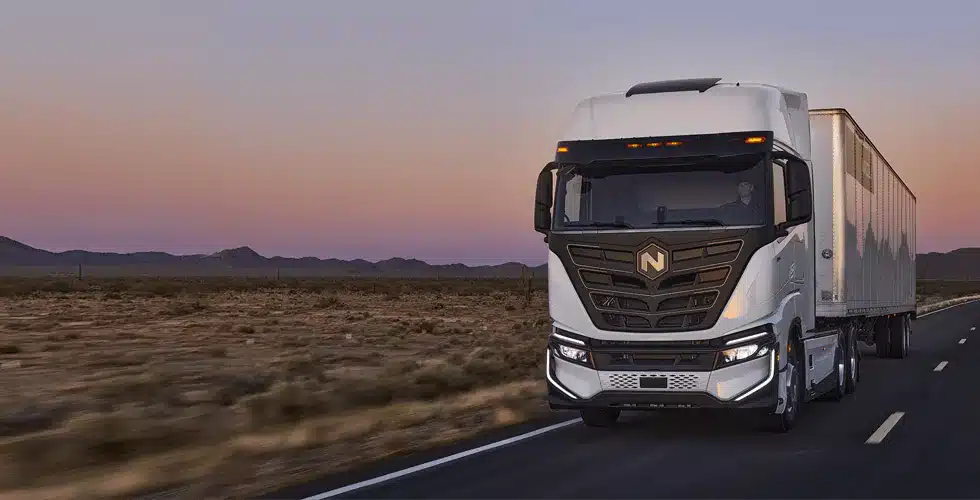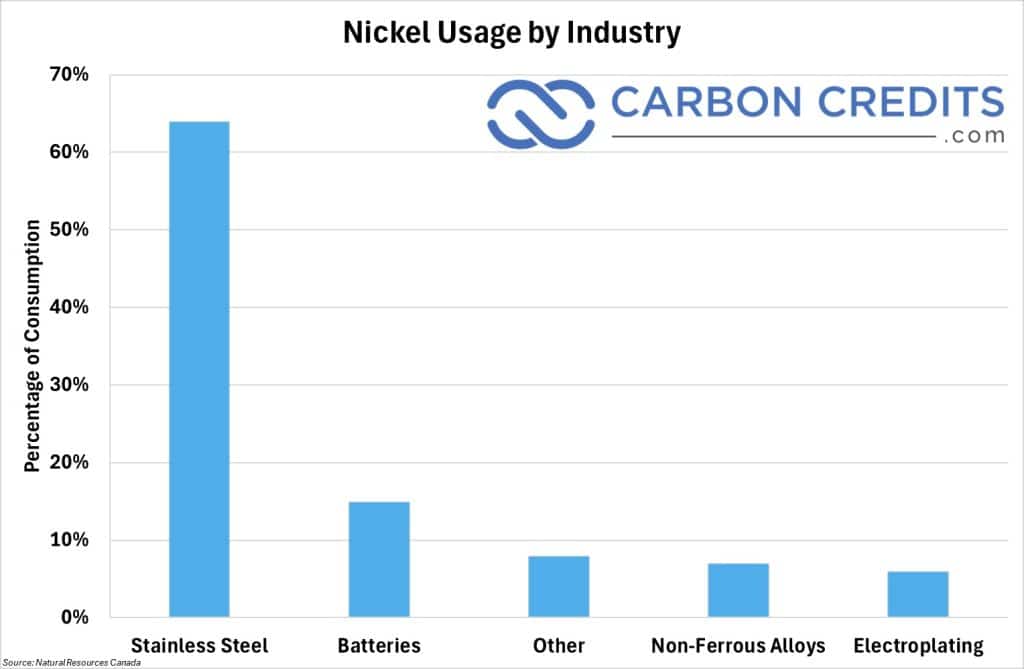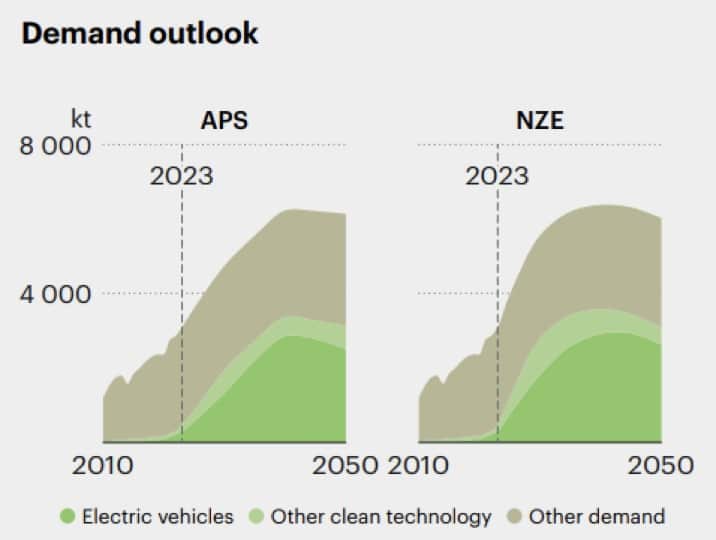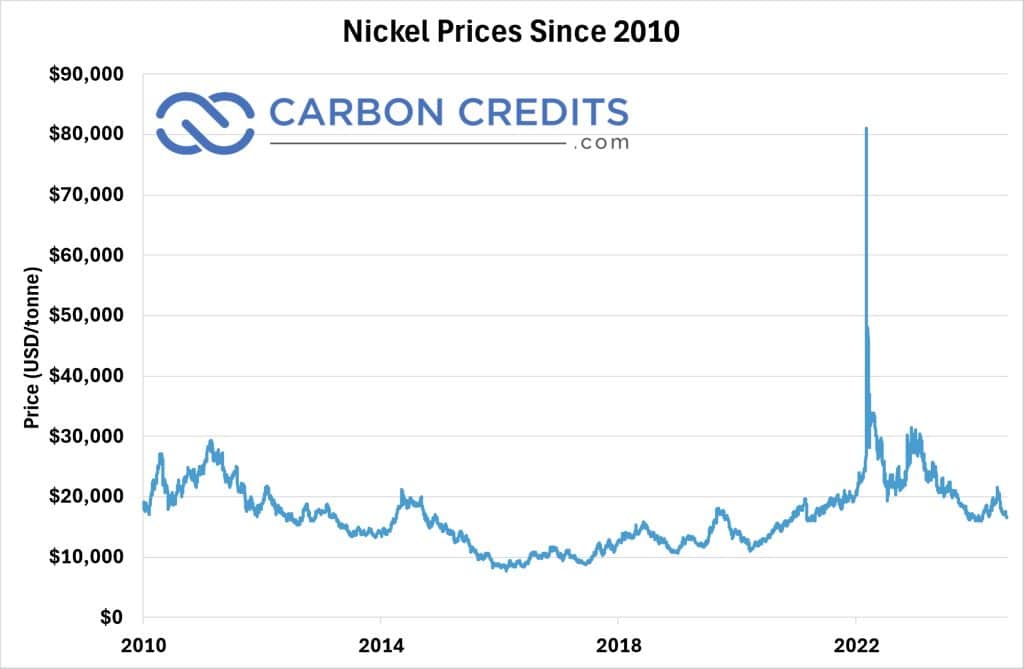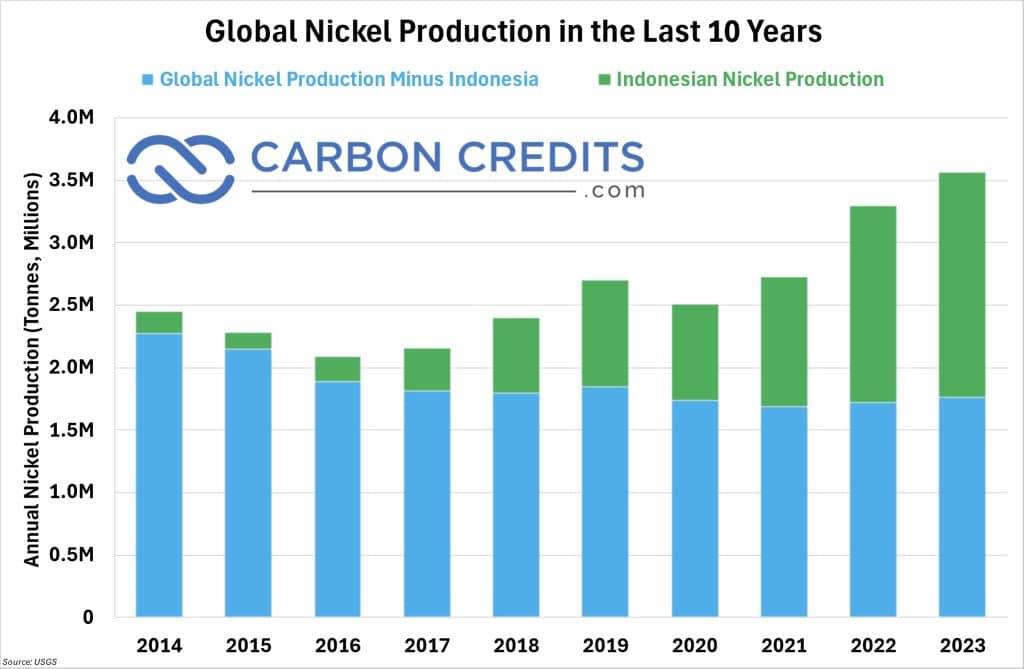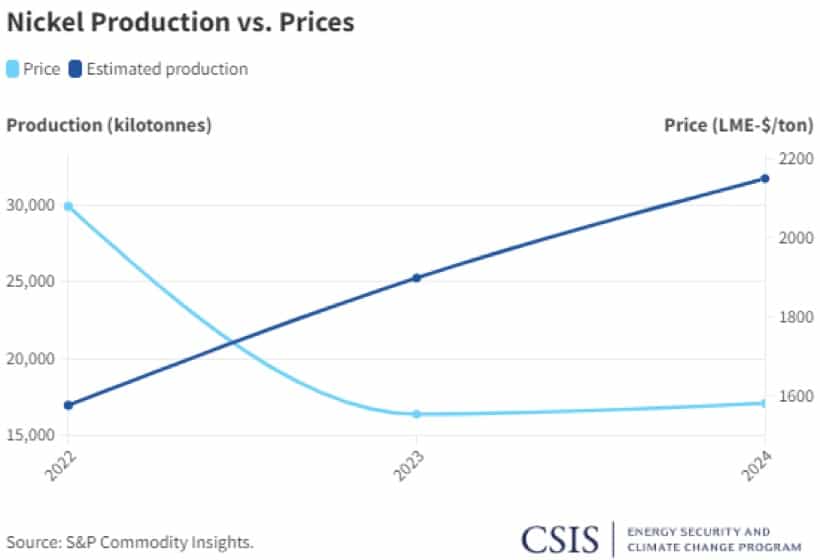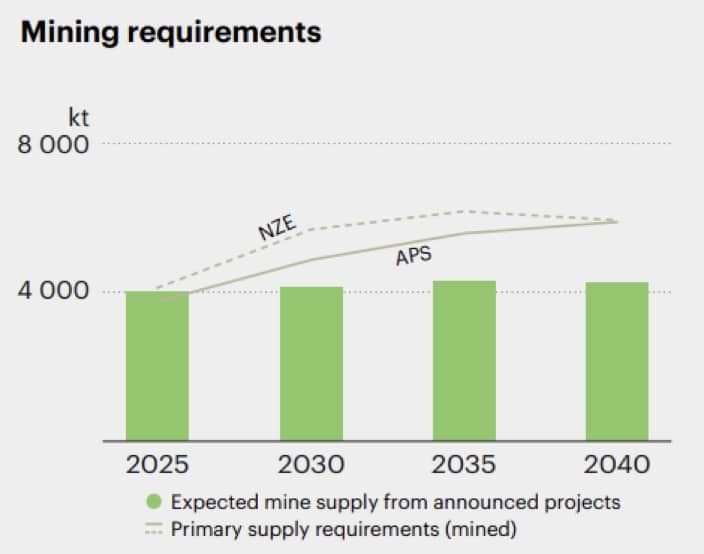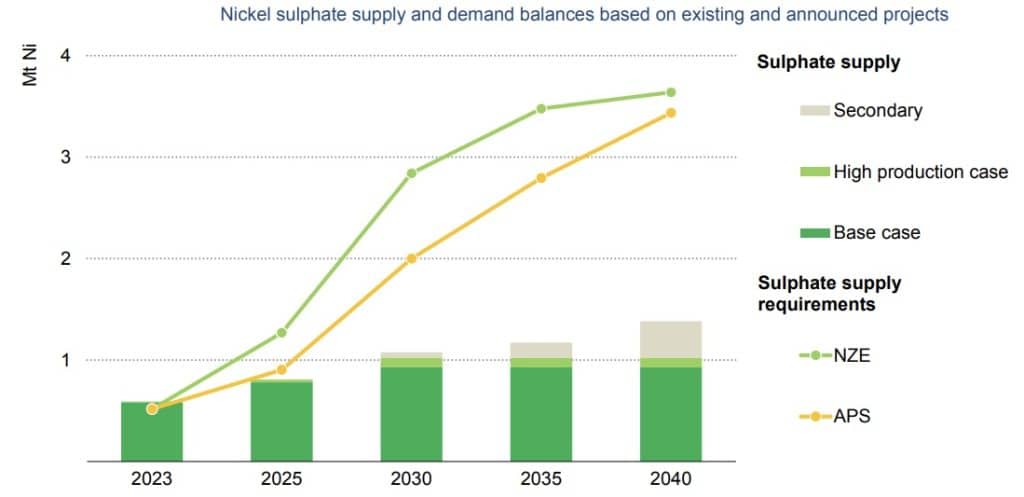With the global energy transition looming large, many have been setting their sights on materials critical to the energy transition, such as copper, lithium, or uranium.
Nickel is yet another mineral on that list, albeit one that seems to have largely flown under most investors’ radars thus far.
It’s understandable why that’s been the case – after all, the primary use for mined nickel has long been industrial, with over three-quarters of global nickel demand being for things like alloy production or electroplating.
However, there’s one avenue of “green” demand for nickel that’s been slowly yet steadily driving up consumption – and that’s electric vehicle (EV) batteries.
- Last year, the average battery EV sold contained 25.3 kilograms of nickel – and that number has been going up year over year
Nickel is one of the key components of the lithium-ion batteries that power EVs worldwide, thanks to its unique physical and chemical properties.
In order to be used in an electric vehicle, nickel must first be refined to extremely high purities, creating what’s known as “battery grade” nickel. Following this, it then needs to be dissolved in sulphuric acid to create nickel sulphate, which can then be used to produce battery cathodes.
Nickel’s high energy density, which allows it to hold more charge for less weight, makes high-nickel battery chemistries more desirable in EV batteries. While the first iterations of the lithium-ion battery used equal proportions of nickel with manganese and cobalt, modern ones use as much nickel as manganese and cobalt combined.
And as technology continues to progress, it’s expected that the ratio will rise to as much as 80% nickel, or even more.
That’s why nickel is now on the critical minerals list of several countries including the US, the EU, and Japan.
- RELATED: Top 3 Nickel Stocks for 2024
The Lights Are Green for Nickel.
EV manufacturers are adding more and more nickel to their batteries each year in order to increase the efficiency and range of their vehicles.
- EVs sold in 2023 contained 8% more nickel, on average, than those sold a year previous
Combine that with the fact that EV sales are expected to continue growing at a breakneck pace, and what you end up with is very healthy outlook for long-term nickel demand.
Below you can see two charts created by the International Energy Agency. The one on the left forecasts nickel demand growth out to 2050 based on currently existing climate pledges, while the one on the right shows the same but in a more aggressive net zero scenario:
You can see that, regardless of which scenario we consider, nickel demand is expected to more than double over the next decade – the only question is how fast we get there.
Even in the conservative case where no more climate pledges are made in the coming years, as in the chart on the left, EV and cleantech demand for nickel is still expected to massively drive nickel’s demand growth.
- Last year, total nickel demand amounted to 3.1 million tonnes, of which 478,000 came from EVs and cleantech. This latter portion is expected to grow to 2 million tonnes of nickel demand by 2030 and 3.4 million tonnes by 2040 in the base case – and it could easily be more, if governments around the world pursue additional climate targets
While all scenarios do see nickel consumption plateauing and falling off slightly towards the tail end of 2050 due to forecast lower demand for nickel-rich battery chemistries, there’s still a 9x increase in nickel demand for EV batteries and other cleantech even in the conservative case.
Simply put, the future for nickel looks tremendous.
However, the recent price performance of nickel seems to tell a different story:
And that’s because of the other half of the picture: nickel supply.
But There’s a Supply Jam . . .
Despite how strong the demand outlook for nickel looks, there’s no escaping the fact that right now, supply far outstrips demand.
And there’s exactly one factor we can point to for this: Indonesia.
In the past ten years, Indonesia has accelerated the pace of nickel mine development domestically, thanks to heavy Chinese investment.
- In 2014, Indonesia produced just 7% of the world’s nickel, with just two nickel smelters. 10 years later in 2023, Indonesia now accounts for just over 50% of global production, with 43 operational smelters and another 52 on the way
Indonesia received $7.3 billion in foreign investment from China’s Belt and Road Initiative in 2023, the largest of any participating country. 90% of the nickel smelters in Indonesia were built by Chinese companies, and most of the mines are Chinese owned as well.
Thanks to the extensive Chinese involvement, the lower labor costs and environmental standards for nickel mines in Indonesia have also led to lower production costs. Nickel from Indonesian mines is cheaper to produce than it is on other countries like Australia or Canada.
This breakneck growth of Indonesian production, during a weak price environment where other producers have scaled back, has contributed to Indonesia’s rise to prominence as the top global nickel producer.
It’s expected that the nickel market will see a surplus of 36,000 tonnes this year, according to a recent report from Macquarie. And it’s unlikely that the nickel market will balance out until after 2025.
Further Down the Road, the Outlook Looks Rosy
Despite how the supply and demand balance looks right now, however, it’s not expected to stay that way as we near the end of the decade.
As the chart above shows, based on current announced mine supply, the nickel market is expected to enter a supply deficit shortly after 2025 – and this shortfall is expected to widen considerably in the decade following, even in the conservative scenario (the solid line).
In other words, even though the current low nickel price environment is discouraging investment, it’ll also create more opportunities down the road thanks to the eventual supply-demand gap that will widen due to the current lack of interest in nickel mining.
Furthermore, as you might recall, in order to be used in EV batteries nickel needs to be further processed into nickel sulphate, which is something not all raw nickel refineries are built to do.
The supply shortfall for nickel sulphate is expected to see an even wider gap than for mined nickel. That said, processing facilities for nickel sulphate can be built on the order of 18-24 months – much quicker than a mine, which is often a years-long process that can get bogged down in studies and permitting.
Even so, the sheer amount of additional nickel sulphate supply required represents yet another opportunity in the nickel markets.
In the near term, it’s likely that nickel prices will continue to stay weak as supply continues to outpace demand. As we near the end of the decade and the push towards net zero continues to accelerate, however, the projected supply-demand gap might just leave the nickel market in significantly different shape than how it looks now.

